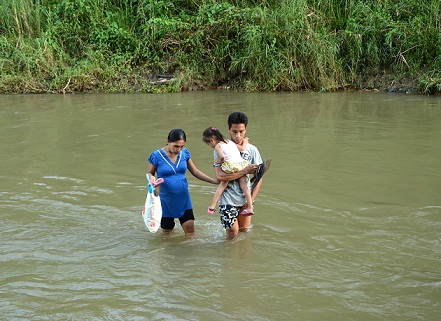By CHICKIE R. LOCSIN

FOUR years ago, mothers were dying in the Philippines at the rate of 221 per 100,000 live births.
Given that maternal mortality is a barometer of a country’s health system, those are disturbing numbers. The situation has improved and it is expected that by this year, the maternal mortality ratio (MMR) 52 per 100,000 live births.
One group working on reducing the country’s MMR is the Zuellig Family Foundation (ZFF), whose basic mission is to enhance the quality of life of the Filipino.
ZFF President Ernesto Garilao:“Most of the mothers who die during childbirth at home and at public hospitals are poor. If ZFF is to be true to its mission, it must address this inequality.
To better achieve that broad objective, ZFF decided to focus on targets in the country’s Millennium Development Goals for health in partnership with government and other stakeholders in the health sector
Zuellig observed that the incidence of maternal deaths is highest in isolated barrios where pregnant women must travel long distances to avail of pre-natal care in municipal health centers. Typically, these women have neither financial nor transportation resources; consequently, they deliver at home using the services of the traditional hilot instead of skilled birth attendants.
But even women who deliver in hospitals could die. Based on 545 death cases reviewed at the end of 2013, 68 percent of maternal deaths occurred in hospitals. Usually, deaths were due to irregular supply of blood and medicines, lack of health specialists and delayed referrals.

This dire situation is not due to a lack of funding; the national government has been providing funds to LGUs, but LGUs must liquidate all related expenses before additional amounts can be given to them.
Garilao, who had served as secretary of the Department of Agrarian Reform during the administration of Fidel V. Ramos, saw the important role of mayors in the improvement of healthcare system in rural areas . “They can be agents of change, he said.
ZFF crafted a two-year Health Leadership and Governance Program with mayors and municipal health officers. In 2009, the ZFF piloted its Health Change Model to address technical, management and incentive issues affecting maternal mortality among other deficiencies in local health systems. Prototyping took place in five sets of 43 municipalities with heavy maternal and child health burdens. In 2014, ZFF, together with its strategic partners, has expanded its reach to 509 municipalities.
Garilao proudly states that as ZFF and its partners closely monitor an area’s health statistics they have validated the theory that ZFF’s systemic approach results in significant improvements of maternal mortality ratios and other health indicators in as short a time as two years.
National statistics are not yet out to determine whether the MMR has improved nationally in 2012/2014. However, there are already many success stories from individual rural municipalities.

Mayor Daylinda Sulong of Lapuyan, Zamboanga del Sur, an early beneficiary of the ZFF Health Change Model, is passionate about the Zuellig initiative. The ZFF syllabus and training sessions honed her ability to address the health concerns of her constituents and raised the community’s health consciousness.
Her municipality now provides 24 x 7 health services. The LGU has four birthing units, two of which were donated by ZFF.
“The LGU must take ownership of the program. If the mayor is committed and can get everyone’s cooperation, health services can be improved, ” she said. She believes that her successful implementation of the program helped in her re-election bid for her third term.
In 2013, ZFF signed a Memorandum of Understanding with the Department of Health (DOH) to work towards institutionalizing the Health Leadership and Governance Program by 2016.
DOH Regional Director Nestor Santiago of the Bureau of Local Health Development and head of the Project Management Committee for the DOH-ZFF partnership program urges LGUs to obtain PhilHealth accreditation so that they can receive reimbursement for the health services they provide their constituents. The government has appropriated P37 billion for universal health care through PhilHealth.
Under the PhilHealth guidelines, 20 percent of the reimbursement can be used as an incentive for health personnel and 80 percent for supplies and equipment. This financial incentive will help to institutionalize the program at the LGU level.
But the biggest challenge to sustainability and institutionalizing health reform is the three-term limit of mayors. Santiago said, “Mayors are critical to transformation. They should be more oriented to using available resources for health reforms and not merely wait for health resources to be provided by the national government. This is the essence of devolution embodied in the LGU code.”
Daniel Zuellig, a member of ZFF’s board of trustees, is mindful of the tough challenges facing these endeavors, yet optimistic that sustainable and continuous improvements of health outcomes in rural communities are achievable: “The conditions we encounter in rural communities, particularly in so-called GIDAs (geographically isolated and disadvantaged areas), can appear daunting, but the results of the continuous and adaptive implementation of ZFF’s programs give us the confidence that this unique public private partnership is the most effective way to realize immediate and long-term improvements in the nation’s bill of health.”
